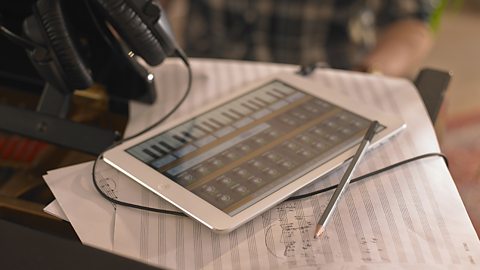Devices
Most computers have a multimedia specification which makes transferring sounds in and out of computers relatively straightforward.
External sound cards can greatly enhance performance by providing options for:
- higher quality audio and MIDI input/output
- better configuration of sockets to allow a greater range of inputs and outputs
- more control over balancing input levels and output levels
- monitoring facilities via a separate headphone channel
- ASIOAudio Stream Input/Output. A sound card driver protocol, allowing for higher quality audio at greater speed. for better performance
Microphones т although the internal microphone on a laptop may give reasonably good results, performance is usually much better working with a better quality microphone through a sound card т or a USB microphone directly into the computer.
External midi controllers т invaluable for recording volume fades, panning or manipulating real time effects controllers. The best ones will have a range of push buttons, sliders and rotary controlsA switch which has a circular motion. which can be assigned to any of the software controllers being used. This allows the user far more creative control over manipulating sounds during recording or live performance, compared with merely moving or clicking a mouse.
Bluetooth - playback via headphones will usually give reasonable results. However for sharing with others, consider a portable speaker option. For situations where portability is a problem, a simple Bluetooth dongle will allow the sound to be sent wirelessly to an amplification system.
Mobile technologies т with certain tablets and mobile phones it is possible to import the work created using apps to a software application on a computer for further work. This can often be achieved using Wi-FiA method of connecting to the internet wirelessly using radio waves. or BluetoothWireless technology used for transmitting data over short distances. or various internet based storage and sharing options.

In this clip, Dev from Radio 1 meets electronic music producer and performer Tim Exile to explore the range of technical equipment that can be used in a live performance.
Music technology used in live performances